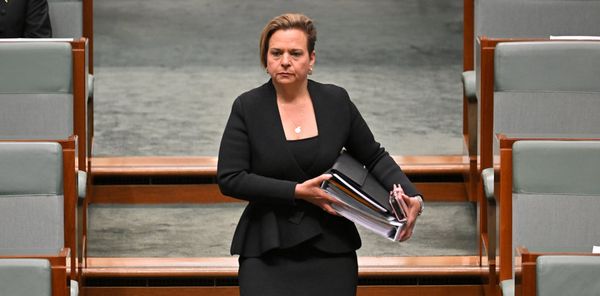Amber* has spent the past six weeks trying to keep a roof over her and her sons' heads.
They have spent nights in motel rooms, shared accommodation, and even her car in the middle of a heatwave while she tried to secure long-term shelter.
Amber, which is not her real name, said she fled a domestic violence situation in January.
"I don't want to eat anything, I don't want to see anyone, I just want to lay down, I want to sleep," she said.
"All night waiting for the morning. When the morning comes, waiting for the night."
She contacted women's shelters in southern New South Wales but so far they have not been able to make room.
She is one of many women across the country struggling to access shelter after leaving a violent home.
A report released by the Paul Ramsay Foundation and the University of Technology Sydney last year found 46,700 women moved out of home during temporary separation from a violent partner in 2016.
Most stayed with friends and family, more than 22 per cent stayed in a refuge, and 12 per cent slept rough.
'Nowhere to go'
Amber said she spent hours driving between regional towns trying to find accommodation.
She said a support service booked her a night at a hotel one hour away, but when she arrived, no one answered her knocks.
"I was very tired, exhausted, upset, crying," Amber said.
A friend, Sophie, has been helping Amber, and booked her accommodation for the night.
She said the past six weeks have been "disappointing and heartbreaking" to witness.
"I see now why we have a situation where women are dying," Sophie said.
"They get stuck with nowhere to go."
Amber enrolled her five-year-old son in school last month, but so far has only been able to send him one day.
"If we sleep in the car, the next morning how am I going to drop my son at school?" she said.
A statewide issue
Regional shelter providers are operating at capacity as they receive requests from dozens of women like Amber each day.
Yvonne Wilson runs the Linking Communities Network's women's refuge at Griffith, in southern NSW.
The refuge can accommodate 16 people, at a stretch, but Ms Wilson said most days they receive that many referrals alone.
"We had seven referrals this morning, and that was up until about 12:30pm," she told the ABC on a Thursday afternoon this month.
Claudia Cummins, a state manager for The Salvation Army's family violence response, said women's refuges in the Illawarra and at Broken Hill in the state's Far West were "almost always at capacity".
"We often hear as well about the difficulties for survivors to access any type of safe accommodation because of the limited housing in those areas," she said.
Rachel Hogg, a doctor of psychology at Charles Sturt University in Wagga Wagga, said a "significant portion of women" report inadequate housing as the reason they return or stay in a domestic violence situation.
"A critical risk ... is the choice between violence and poverty," she said.
A new way
The state government last year announced almost $430 million to fund refuges built on a new model called core and cluster.
The model sees families live in individual units with access to services rather than in a communal building.
The Linking Communities Network has received just over $7 million to double capacity at Griffith, accommodating 38 people, with a new shelter.
The Salvation Army has also received funding to double the capacity of shelters in the Illawarra and at Broken Hill.
Ms Cummins said the model gave survivors the privacy and autonomy of their own living spaces in a secure environment, "whilst also providing a sense of safety, support and community that comes with having access to services on-site and communal areas for residents to come together".
Dr Hogg said core and cluster also takes into account the intersections of women in domestic violence situations.
"For example, a woman with a disability who has experienced domestic violence may have particular housing needs," she said.
"This model is trying to take into account these kinds of needs."
More support needed
Dr Hogg welcomed the funding and expansion of refuges but said far more needs to be done.
"If we started to think about this the way we think about climate change and other major issues on the political agenda, I think we'd see this as an issue that needs more funding," she said.
Ms Cummins said the expansion of family and domestic violence services needed to continue.
"As well as look at family violence from a multi-faceted lens to be able to address this and actually combat this problem ongoing."







